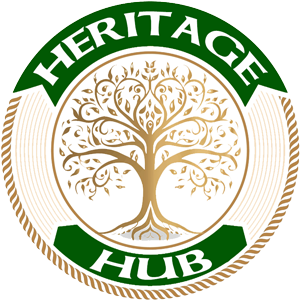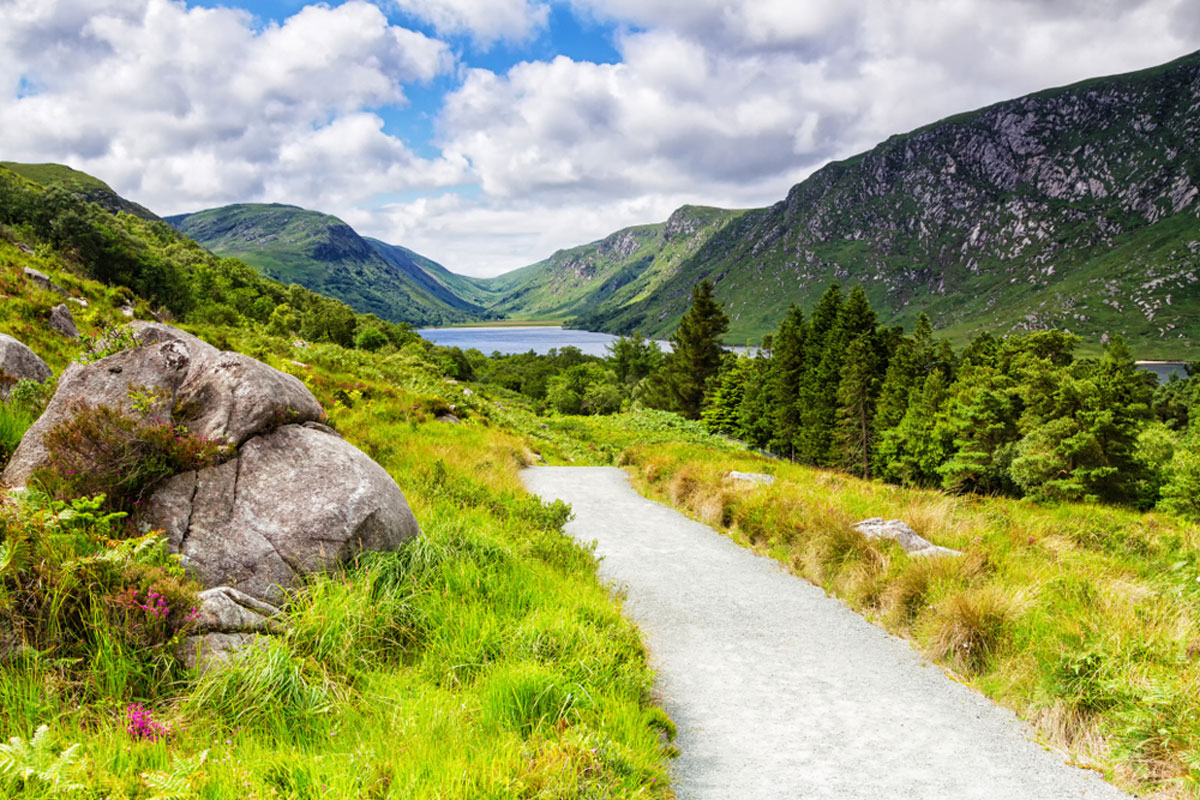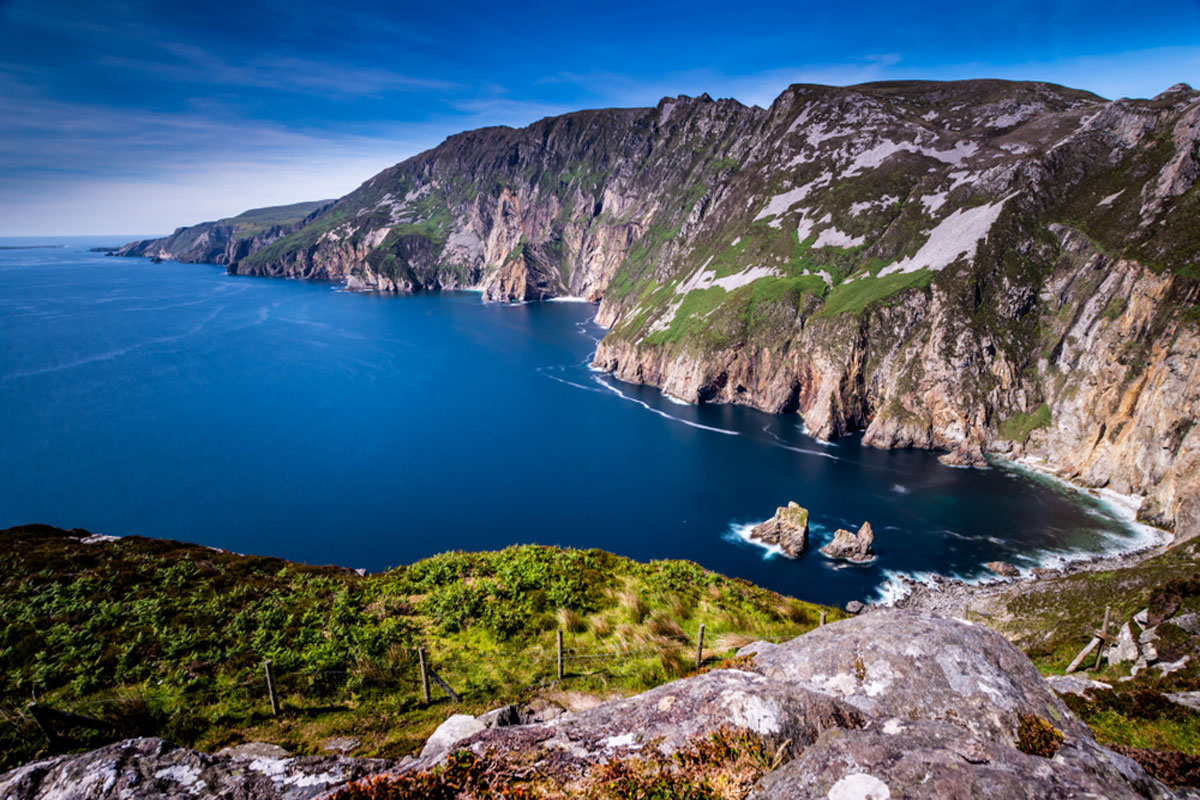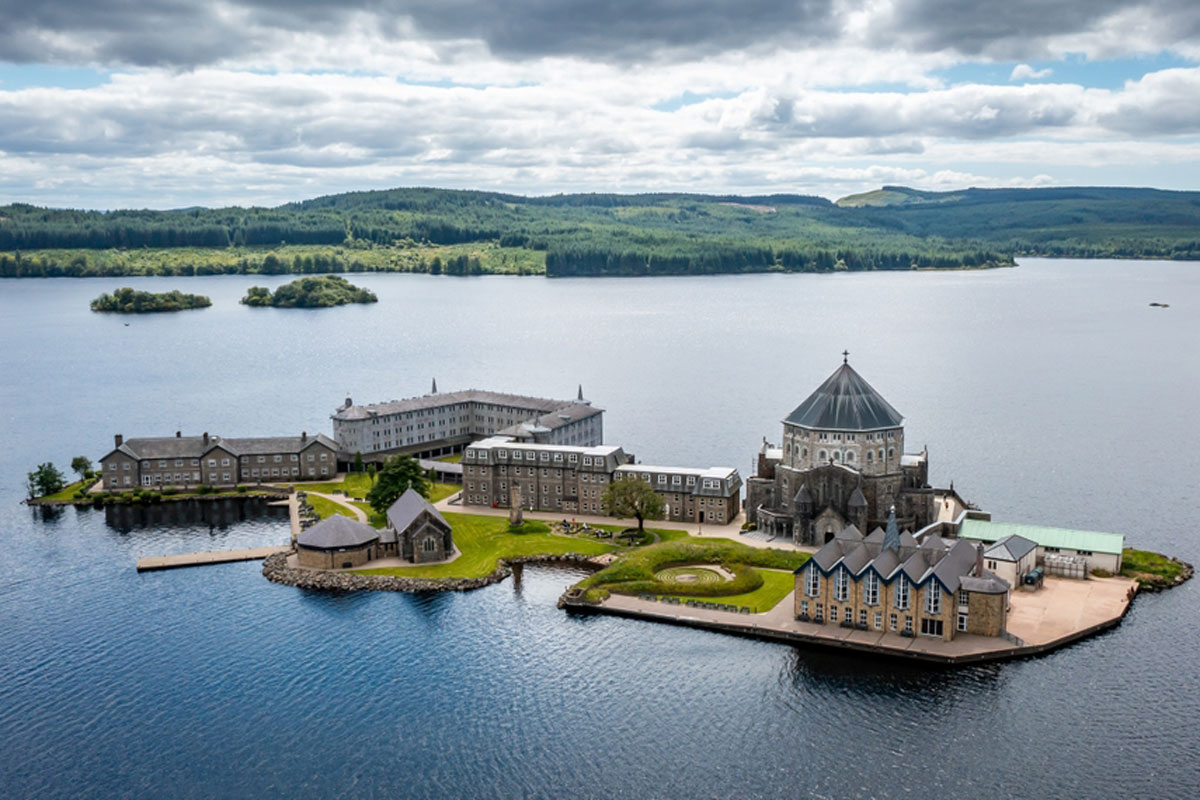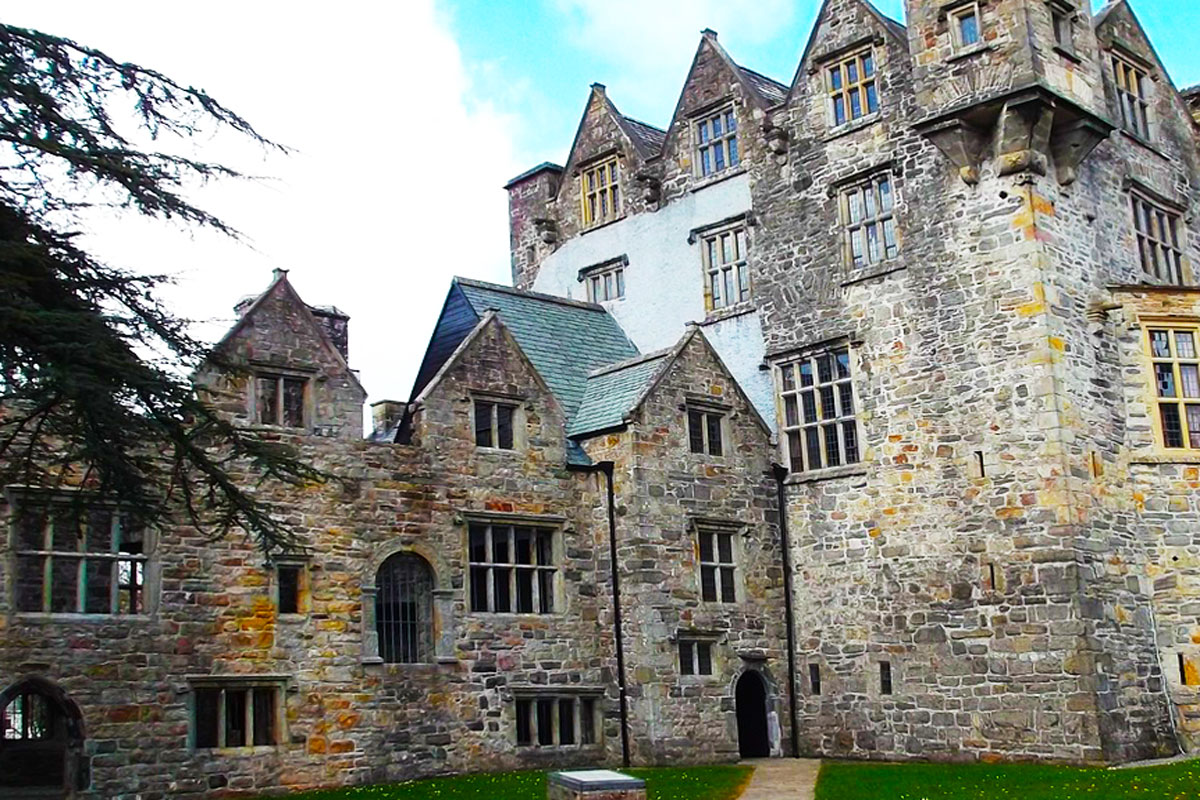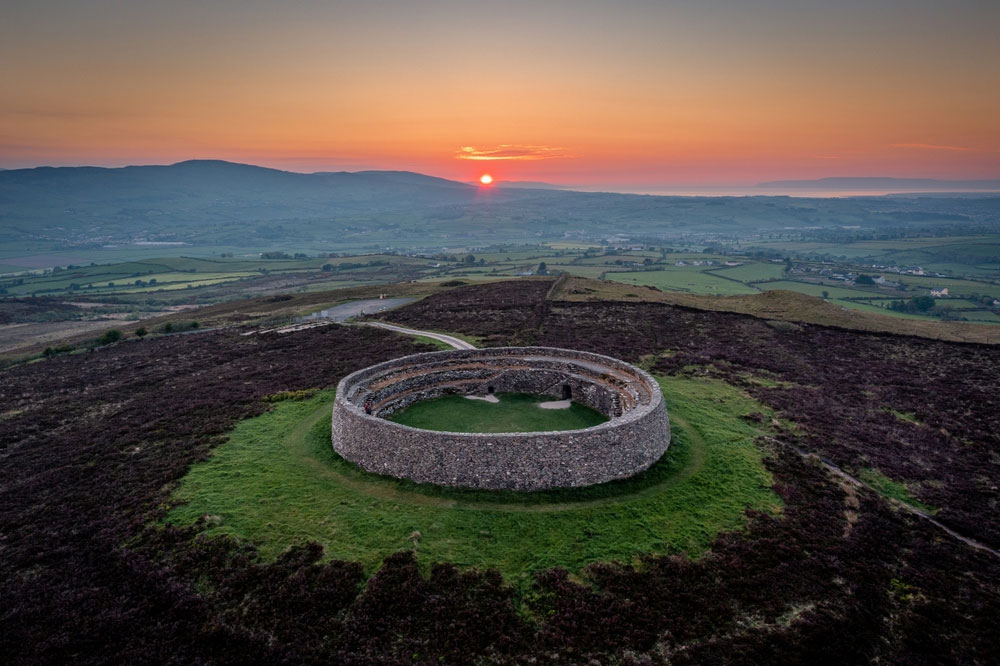Introduction
Nestled in the heart of County Donegal, Glenveagh National Park is a stunning natural treasure that offers a captivating blend of rugged landscapes, rich history, and diverse wildlife. Spanning over 16,000 hectares, it is the second largest national park in Ireland and one of its most beautiful.
A Brief History
Glenveagh, meaning “Glen of the Birch Trees” in Irish, has a history as rich as its landscapes. The land that now forms the park was originally part of the Glenveagh Estate, established in the mid-19th century by John George Adair, a wealthy land speculator. Adair’s legacy is controversial due to the infamous evictions he carried out to create his estate. Despite this dark chapter, Glenveagh Castle, built between 1870 and 1873, stands as a testament to the opulence of the era and is now a central attraction within the park.
Geography and Climate
The park’s geography is marked by dramatic contrasts. It features vast expanses of bog and heath, dense woodlands, and steep, craggy mountains. The Derryveagh Mountains dominate the landscape, offering panoramic views that captivate visitors. The climate is typically temperate maritime, with mild, wet winters and cool, damp summers, contributing to the lushness of the park’s flora.
Biodiversity
Glenveagh National Park is a haven for biodiversity. It is home to a variety of plant species, including rare and protected ones. The park’s fauna is equally impressive, featuring red deer, the largest population in Ireland, and the golden eagle, reintroduced to the area in 2001. The park’s lakes, rivers, and streams further enhance its ecological richness, providing habitats for a range of aquatic life.
Visitor Experience
Whether you are interested in hiking, wildlife watching, or exploring historical sites, Glenveagh offers something for everyone. The park boasts numerous walking trails, from leisurely strolls to challenging hikes. The Visitor Centre provides informative exhibits and guided tours, helping visitors gain deeper insights into the park’s natural and cultural heritage.
Historical Significance
Glenveagh National Park’s rich history is intertwined with the story of Glenveagh Castle and its creator, John George Adair. Now let us explore the historical significance of the castle, the estate, and the impact Adair had on the region and its people.
Glenveagh Castle
Glenveagh Castle, an architectural marvel, is situated on the shores of Lough Veagh, surrounded by serene gardens and dramatic landscapes. Constructed between 1870 and 1873, the castle is a blend of Victorian and Gothic styles, reflecting the grandeur and opulence of the 19th century. The castle’s turreted silhouette against the backdrop of the Derryveagh Mountains creates a picturesque and iconic image that has become synonymous with Glenveagh.
Inside, the castle boasts richly furnished rooms, including the Drawing Room, Dining Room, and the Italianate Terrace, each offering a glimpse into the lavish lifestyle of its former inhabitants. The castle’s interiors feature period furniture, artworks, and luxurious decor that transport visitors back in time.
John George Adair
John George Adair, a wealthy land speculator originally from County Laois, acquired the land for Glenveagh Estate in the 1850s. His ambition to create a vast hunting estate led to one of the most infamous episodes in Irish history—the Derryveagh Evictions of 1861. Adair forcibly evicted 244 tenants from their homes, clearing the land to establish his estate. This act of cruelty left a lasting scar on the local community and is a dark chapter in the history of Glenveagh.
Despite his notoriety, Adair’s vision for Glenveagh materialized into the estate and castle that we see today. His wife, Cornelia Adair, continued to develop the estate after his death, contributing to the gardens and the overall beauty of the property.
The Castle’s Later Years
After changing hands several times, Glenveagh Castle was eventually owned by Henry McIlhenny, an American art collector, and philanthropist, in the mid-20th century. McIlhenny made significant contributions to the restoration and preservation of the castle and its gardens. Under his stewardship, the estate became a haven for art and culture, hosting numerous distinguished guests.
In 1975, McIlhenny bequeathed Glenveagh Castle and its surrounding lands to the Irish nation, ensuring its preservation for future generations. The estate was subsequently integrated into Glenveagh National Park, which was officially opened to the public in 1986.
Cultural and Historical Legacy
Today, Glenveagh Castle stands not only as a monument to Victorian grandeur but also as a reminder of the complex history of the region. The castle and its gardens are open to the public, offering guided tours that delve into the estate’s storied past. Visitors can explore the lush gardens, walk through the grand rooms, and learn about the lives of those who shaped Glenveagh.
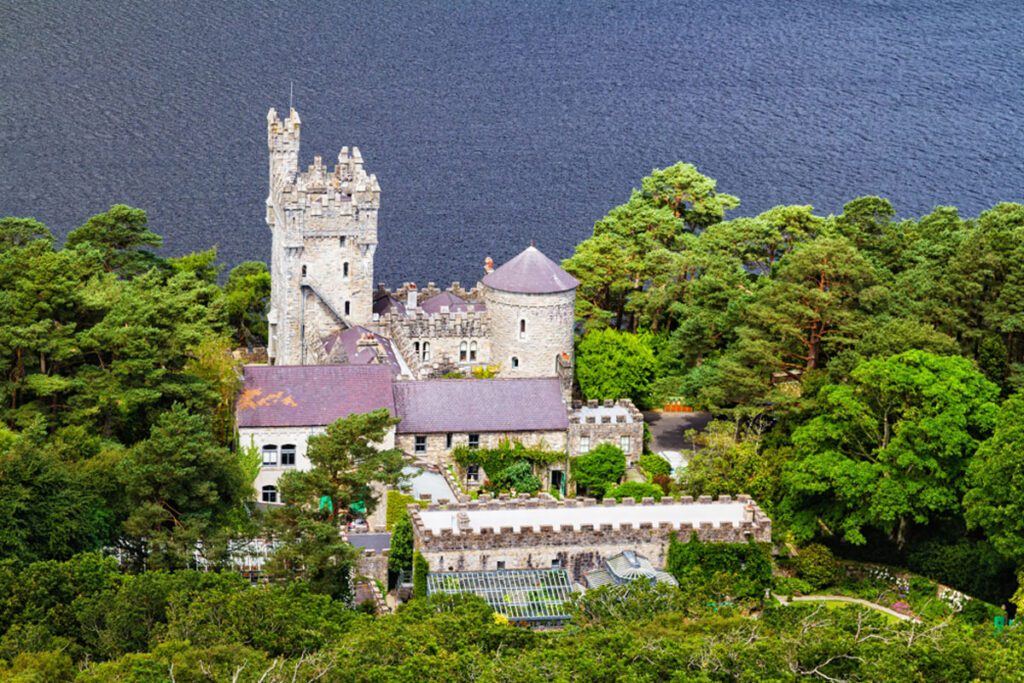
Flora and Fauna
Glenveagh National Park is a biodiversity hotspot, showcasing a remarkable variety of flora and fauna. The park’s diverse ecosystems, highlights the unique plant and animal species that thrive in its landscapes.
Flora
The vegetation of Glenveagh National Park is a tapestry of different plant communities, each adapted to the park’s varied terrain and climate.
Woodlands
The park’s woodlands, primarily consisting of native oak, birch, and rowan trees, provide a lush canopy that supports a wide range of understory plants and wildlife. In particular, the ancient oak woods are a significant ecological feature, offering habitat for numerous bird species and insects.
Heath and Bog
Much of Glenveagh is covered by heathland and blanket bog, characteristic of the rugged upland areas. These habitats are dominated by heather, mosses, and sedges, creating a distinctive landscape that changes with the seasons. The boglands are particularly important for their role in carbon sequestration and water regulation.
Gardens
Surrounding Glenveagh Castle are formal gardens that contrast with the wild landscapes of the park. These gardens, developed primarily by Cornelia Adair and later by Henry McIlhenny, feature exotic plant species from around the world, including rhododendrons, azaleas, and various ornamental trees and shrubs. The Walled Garden, with its meticulously maintained flower beds and pathways, is a highlight for visitors.
Fauna
The fauna of Glenveagh National Park is as diverse and impressive as its flora, with many species benefiting from the protected status of the park.
Mammals
The park is renowned for its population of red deer, the largest herd in Ireland. These majestic animals can often be seen grazing in the open areas or moving through the woodlands. Other mammals include the elusive pine marten, the Irish hare, and various bat species that roost in the park’s old trees and buildings.
Birds
Glenveagh is a paradise for birdwatchers. The golden eagle, reintroduced to the park in 2001, is one of the most iconic species. These magnificent raptors nest in the remote crags and hunt across the park. Other notable birds include the peregrine falcon, kestrel, and various species of owls and songbirds that inhabit the diverse habitats of the park.
Aquatic Life
The park’s lakes, rivers, and streams support a range of aquatic life. Lough Veagh, the largest lake in the park, is home to fish species such as brown trout and Arctic char. Otters can also be seen along the waterways, hunting for fish and playing in the water.
Conservation Efforts
Glenveagh National Park is committed to preserving its natural heritage. Conservation programs focus on habitat restoration, species protection, and research. Efforts to control invasive species, such as rhododendron, are ongoing to protect the native flora and maintain the ecological balance. The reintroduction of the golden eagle is a testament to the park’s success in restoring native species and enhancing biodiversity.
Visitor Engagement
Visitors to Glenveagh can experience its natural wonders through various activities. The park offers numerous trails that wind through different habitats, providing opportunities for hiking, wildlife watching, and photography. Educational programs and guided tours are available to deepen visitors’ understanding of the park’s ecological significance.
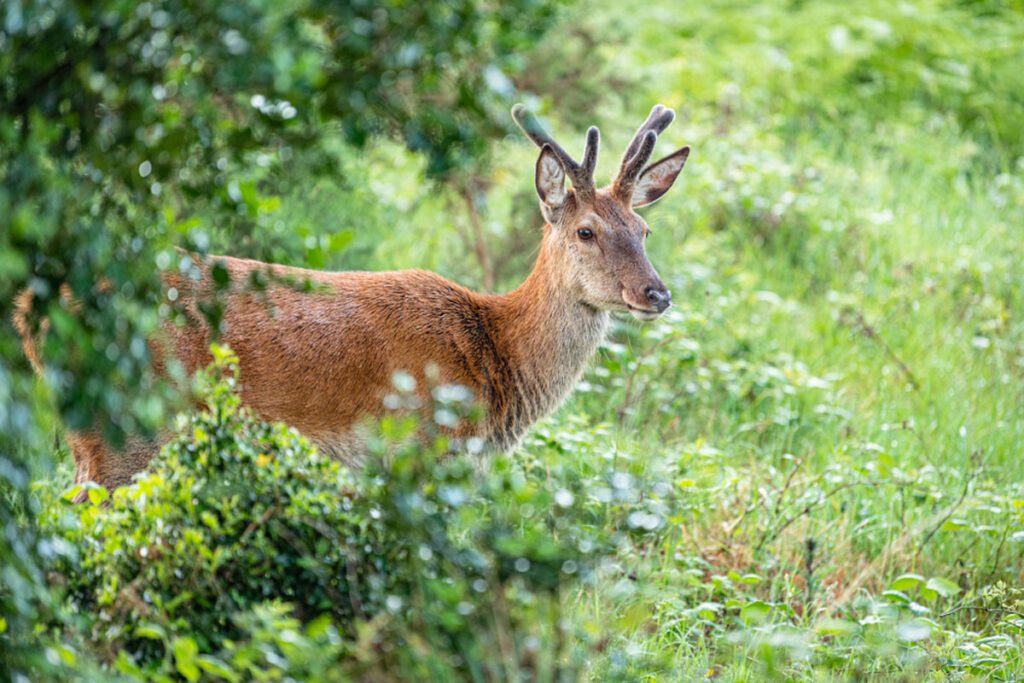
Recreational Activities
Glenveagh National Park offers a wealth of recreational activities that allow visitors to immerse themselves in its natural beauty and rich cultural heritage. Now we explore the diverse range of experiences available to outdoor enthusiasts and travelers seeking adventure and relaxation.
Hiking and Walking Trails
One of the best ways to explore Glenveagh National Park is through its extensive network of hiking and walking trails. The park offers trails of varying lengths and difficulty levels, catering to both casual walkers and seasoned hikers.
Glenveagh Castle Trail
This popular trail leads from the Visitor Centre to Glenveagh Castle, offering stunning views of Lough Veagh and the surrounding mountains. The walk is relatively easy and suitable for all ages.
Bridle Path Trail
For a longer hike, the Bridle Path Trail extends beyond Glenveagh Castle, winding through the woodlands and heathland of the park. This trail provides opportunities for birdwatching and enjoying the peaceful natural surroundings.
Mountain Trails
Experienced hikers can tackle the challenging routes that lead into the Derryveagh Mountains. These trails offer breathtaking panoramic views of the park and beyond, rewarding those who venture to higher elevations.
Wildlife Watching
Glenveagh National Park is a haven for wildlife enthusiasts. Visitors have the chance to observe a variety of species in their natural habitats, from red deer grazing on the hillsides to golden eagles soaring overhead.
Birdwatching
The park’s diverse habitats support an impressive array of bird species. Birdwatchers can spot golden eagles, peregrine falcons, and numerous other raptors and songbirds throughout the year. The park’s bird hides provide excellent vantage points for observing feathered residents and migrants.
Red Deer Rutting Season
Autumn brings a special treat for wildlife watchers as red deer gather for the annual rutting season. The echoing calls of stags reverberate across the hills, creating a memorable wildlife spectacle.
Boating and Fishing
Lough Veagh, the largest lake in Glenveagh National Park, offers opportunities for boating and fishing enthusiasts. Visitors can rent rowboats or bring their own non-motorized watercraft to explore the tranquil waters surrounded by stunning scenery.
Fishing
Anglers can try their luck fishing for brown trout and Arctic char in Lough Veagh. Fishing permits are required and can be obtained from the Visitor Centre, ensuring sustainable practices and conservation of fish populations.
Guided Tours and Interpretive Programs
To enhance visitors’ understanding of Glenveagh’s natural and cultural heritage, the park offers guided tours and interpretive programs led by knowledgeable guides.
Glenveagh Castle Tours
Guided tours of Glenveagh Castle provide insights into its history, architecture, and former inhabitants. Visitors can explore the elegant rooms and learn about the lives of the Adair family and subsequent owners.
Educational Programs
Educational programs cater to school groups and families, offering interactive learning experiences about the park’s ecosystems, wildlife conservation efforts, and local history. These programs promote environmental awareness and appreciation for Glenveagh’s natural treasures.
Picnicking and Relaxation
Scenic picnic areas scattered throughout Glenveagh National Park invite visitors to unwind and enjoy a leisurely meal amidst breathtaking landscapes. Picnic tables are conveniently located near viewpoints and along walking trails, providing opportunities for relaxation and rejuvenation.
Glenveagh National Park’s recreational activities cater to a wide range of interests, making it a perfect destination for outdoor enthusiasts, nature lovers, and families seeking adventure and tranquility. Whether hiking through rugged mountains, watching wildlife in their natural habitats, or exploring historical landmarks, visitors to Glenveagh are guaranteed an unforgettable experience.
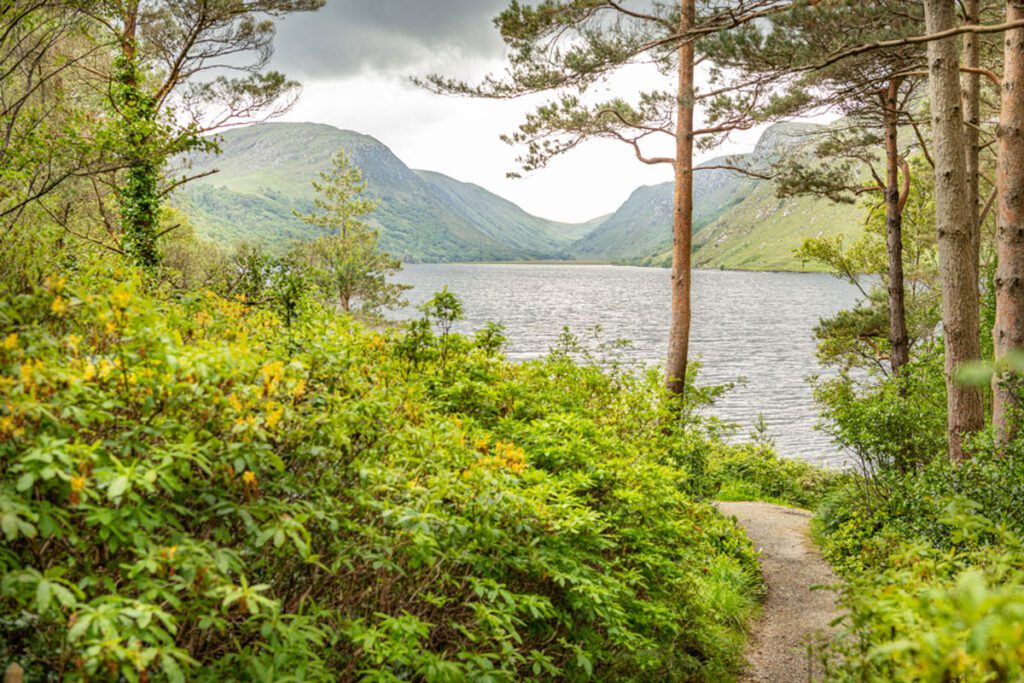
Conclusion
Glenveagh National Park stands as a testament to Ireland’s natural beauty and cultural heritage, offering visitors a captivating blend of landscapes, wildlife, and history. Let’s reflect on the unique appeal of Glenveagh and its significance as a cherished national park.
Natural Beauty and Landscapes
Glenveagh’s landscapes are diverse and awe-inspiring, encompassing rugged mountains, serene lakes, ancient woodlands, and expansive boglands. The park’s dramatic scenery is a photographer’s paradise, capturing the essence of Ireland’s untamed wilderness. Each season brings its own charm, from the vibrant hues of heather in bloom to the tranquility of snow-capped peaks in winter.
Rich Cultural Heritage
The historical significance of Glenveagh is embodied in Glenveagh Castle and the remnants of the estate’s past. The castle, with its Victorian grandeur and surrounding gardens, offers a glimpse into the opulent lifestyles of its former inhabitants. Despite its controversial history, the estate’s evolution into a national park represents a commitment to conservation and the preservation of cultural landmarks.
Biodiversity and Conservation
Glenveagh National Park is a sanctuary for biodiversity, supporting a wide array of plant and animal species. From ancient oak woodlands to rare bog habitats, the park’s ecosystems are carefully preserved through conservation efforts. The reintroduction of species like the golden eagle highlights ongoing initiatives to restore natural balance and protect endangered wildlife.
Visitor Experience
Visitors to Glenveagh are treated to a range of experiences that immerse them in its natural wonders and cultural heritage. Whether hiking along scenic trails, observing red deer in their habitat, or exploring the historic castle and gardens, the park offers something for everyone. Guided tours and educational programs enhance the visitor experience, fostering appreciation for Glenveagh’s ecological significance.
Glenveagh National Park encapsulates the essence of Ireland’s natural and cultural treasures, inviting exploration and discovery amidst breathtaking landscapes. As one of the country’s largest and most beloved national parks, Glenveagh continues to inspire awe and reverence for its beauty and historical legacy. Whether for outdoor adventure, wildlife observation, or quiet reflection, Glenveagh promises a memorable experience that resonates with visitors long after they leave.
Visiting Glenveagh National Park is not just a journey through stunning scenery; it’s an opportunity to connect with Ireland’s natural heritage and experience the enduring charm of this remarkable landscape.
Natural Attractions
- Slieve League Cliffs – Among the highest sea cliffs in Europe, offering breathtaking views of the Atlantic Ocean.
- Glenveagh National Park – A stunning park with rugged mountains, pristine lakes, and the enchanting Glenveagh Castle.
- Malin Head – Ireland’s northernmost point, known for its dramatic coastal scenery and wildlife.
- Fanad Head Lighthouse – A picturesque lighthouse located on a scenic peninsula.
- Blue Stack Mountains – Perfect for hikers seeking challenging trails and spectacular vistas.
- Ards Forest Park – A tranquil forest park with sandy beaches, walking trails, and picnic spots.
Historical and Cultural Sites
- Donegal Castle – A beautifully restored 15th-century castle in the heart of Donegal Town.
- Grianán of Aileach – A hilltop stone fort offering panoramic views and a glimpse into ancient Irish history.
- Glencolmcille Folk Village – A living history museum depicting traditional Irish rural life.
- Doe Castle – A well-preserved castle with stunning views over Sheephaven Bay.
- Famine Memorial – A poignant tribute to those who suffered during the Great Famine.
Lakes and Water Activities
- Lough Eske – A serene lake surrounded by woodlands, ideal for fishing and kayaking.
- Lough Finn – Known for its trout fishing and scenic setting.
- River Finn – Popular for salmon fishing and riverside walks.
- Ballymastocker Bay – A Blue Flag beach perfect for swimming and relaxing.
Scenic Drives and Villages
- Atlantic Drive – A scenic coastal route showcasing Donegal’s rugged beauty.
- Inishowen Peninsula – A loop drive featuring stunning beaches, historic sites, and charming villages.
- Dungloe – Known for its traditional music and the Mary from Dungloe Festival.
- Ardara – Famous for its tweed-making heritage and friendly atmosphere.
Unique Experiences
- Tory Island – A remote island rich in folklore, accessible by ferry.
- Wild Atlantic Way – Explore Donegal’s section of this iconic coastal route.
- Donegal Craft Village – A hub for local artists and craftspeople creating traditional and modern pieces.
- Surfing at Bundoran – Known as Ireland’s surf capital, offering waves for all skill levels.
- Festivals and Events – Enjoy lively events such as the Donegal Bay and Bluestacks Festival and Earagail Arts Festival.
County Donegal offers a mix of dramatic landscapes, rich cultural heritage, and warm hospitality, making it a must-visit destination in Ireland.
Helpful Resources


